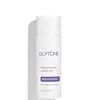What's inside
What's inside
 Key Ingredients
Key Ingredients

 Benefits
Benefits

 Concerns
Concerns

 Ingredients Side-by-side
Ingredients Side-by-side

Water
Skin ConditioningGluconolactone
Skin ConditioningCaprylic/Capric Triglyceride
MaskingGlycerin
HumectantOctyldodecanol
EmollientC10-18 Triglycerides
EmollientC15-19 Alkane
SolventSodium Hydroxide
BufferingLactic Acid
BufferingCetearyl Alcohol
EmollientHydroxyethyl Acrylate/Sodium Acryloyldimethyl Taurate Copolymer
Emulsion StabilisingParfum
MaskingSorbitan Caprylate
EmulsifyingPolyglyceryl-2 Stearate
EmulsifyingCitric Acid
BufferingSodium Gluconate
Skin ConditioningPolyacrylate Crosspolymer-6
Emulsion StabilisingGlyceryl Stearate
EmollientMicrocrystalline Cellulose
AbsorbentStearyl Alcohol
EmollientPropanediol
SolventBenzoic Acid
MaskingSphingomonas Ferment Extract
Skin ConditioningSodium Hyaluronate
HumectantPolysorbate 60
EmulsifyingSorbitan Isostearate
EmulsifyingWater, Gluconolactone, Caprylic/Capric Triglyceride, Glycerin, Octyldodecanol, C10-18 Triglycerides, C15-19 Alkane, Sodium Hydroxide, Lactic Acid, Cetearyl Alcohol, Hydroxyethyl Acrylate/Sodium Acryloyldimethyl Taurate Copolymer, Parfum, Sorbitan Caprylate, Polyglyceryl-2 Stearate, Citric Acid, Sodium Gluconate, Polyacrylate Crosspolymer-6, Glyceryl Stearate, Microcrystalline Cellulose, Stearyl Alcohol, Propanediol, Benzoic Acid, Sphingomonas Ferment Extract, Sodium Hyaluronate, Polysorbate 60, Sorbitan Isostearate
Water
Skin ConditioningGlycolic Acid
BufferingCeteareth-6 Olivate
EmulsifyingPEG-6 Caprylic/Capric Glycerides
EmulsifyingIsododecane
EmollientDimethicone
EmollientGlycerin
HumectantSodium Hydroxide
BufferingSilica
AbrasivePolysorbate 20
EmulsifyingMicrocrystalline Cellulose
AbsorbentPolysilicone-11
Stearyl Alcohol
EmollientCitric Acid
BufferingHydroxyethylcellulose
Emulsion StabilisingCeteareth-20
CleansingHydrolyzed Corn Starch
HumectantCellulose Gum
Emulsion StabilisingPropylene Glycol
HumectantImidazolidinyl Urea
PreservativeMethylparaben
PreservativePropylparaben
PreservativeWater, Glycolic Acid, Ceteareth-6 Olivate, PEG-6 Caprylic/Capric Glycerides, Isododecane, Dimethicone, Glycerin, Sodium Hydroxide, Silica, Polysorbate 20, Microcrystalline Cellulose, Polysilicone-11, Stearyl Alcohol, Citric Acid, Hydroxyethylcellulose, Ceteareth-20, Hydrolyzed Corn Starch, Cellulose Gum, Propylene Glycol, Imidazolidinyl Urea, Methylparaben, Propylparaben
 Reviews
Reviews

Ingredients Explained
These ingredients are found in both products.
Ingredients higher up in an ingredient list are typically present in a larger amount.
Citric Acid is an alpha hydroxy acid (AHA) naturally found in citrus fruits like oranges, lemons, and limes.
Like other AHAs, citric acid can exfoliate skin by breaking down the bonds that hold dead skin cells together. This helps reveal smoother and brighter skin underneath.
However, this exfoliating effect only happens at high concentrations (20%) which can be hard to find in cosmetic products.
Due to this, citric acid is usually included in small amounts as a pH adjuster. This helps keep products slightly more acidic and compatible with skin's natural pH.
In skincare formulas, citric acid can:
While it can provide some skin benefits, research shows lactic acid and glycolic acid are generally more effective and less irritating exfoliants.
Most citric acid used in skincare today is made by fermenting sugars (usually from molasses). This synthetic version is identical to the natural citrus form but easier to stabilize and use in formulations.
Read more about some other popular AHA's here:
Learn more about Citric AcidGlycerin is already naturally found in your skin. It helps moisturize and protect your skin.
A study from 2016 found glycerin to be more effective as a humectant than AHAs and hyaluronic acid.
As a humectant, it helps the skin stay hydrated by pulling moisture to your skin. The low molecular weight of glycerin allows it to pull moisture into the deeper layers of your skin.
Hydrated skin improves your skin barrier; Your skin barrier helps protect against irritants and bacteria.
Glycerin has also been found to have antimicrobial and antiviral properties. Due to these properties, glycerin is often used in wound and burn treatments.
In cosmetics, glycerin is usually derived from plants such as soybean or palm. However, it can also be sourced from animals, such as tallow or animal fat.
This ingredient is organic, colorless, odorless, and non-toxic.
Glycerin is the name for this ingredient in American English. British English uses Glycerol/Glycerine.
Learn more about GlycerinMicrocrystalline Cellulose is another name for refined wood pulp. It is used as an emulsifier and mattifying ingredient. As an emulsifier, it helps keep ingredients together.
Sodium Hydroxide is also known as lye or caustic soda. It is used to adjust the pH of products; many ingredients require a specific pH to be effective.
In small amounts, sodium hydroxide is considered safe to use. However, large amounts may cause chemical burns due to its high alkaline.
Your skin has a natural pH and acid mantle. This acid mantle helps prevent harmful bacteria from breaking through. The acid mantle also helps keep your skin hydrated.
"Alkaline" refers to a high pH level. A low pH level would be considered acidic.
Learn more about Sodium HydroxideStearyl Alcohol is a type of fatty alcohol from stearic acid. It is a white, waxy compound used to emulsify ingredients.
Fatty Alcohols are most often used as an emollient or to thicken a product. Emollients help soothe and hydrate the skin by trapping moisture.
They are usually derived from natural fats and oils and therefore do not have the same drying or irritating effect as solvent alcohols. FDA allows products labeled "alcohol-free" to have fatty alcohols.
Learn more about Stearyl AlcoholWater. It's the most common cosmetic ingredient of all. You'll usually see it at the top of ingredient lists, meaning that it makes up the largest part of the product.
So why is it so popular? Water most often acts as a solvent - this means that it helps dissolve other ingredients into the formulation.
You'll also recognize water as that liquid we all need to stay alive. If you see this, drink a glass of water. Stay hydrated!
Learn more about Water